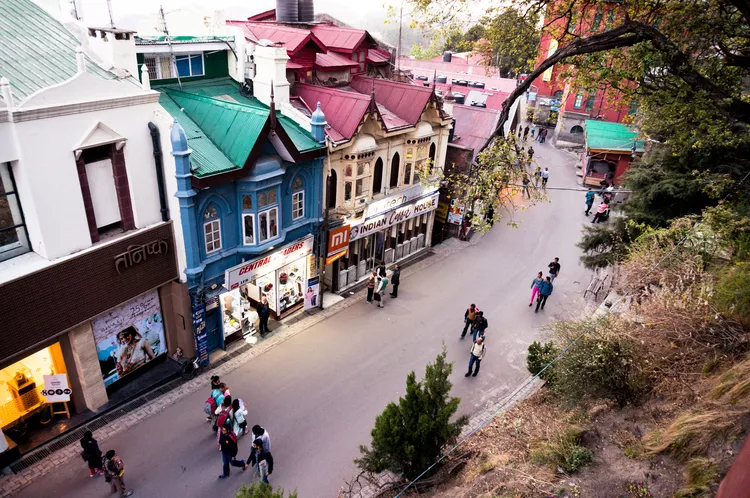Summary
Shimla, the capital of Himachal Pradesh, is one of India’s most popular hill stations and is often referred to as the “Queen of the Hills.” The town flourished during the reign of the British Empire, beginning as a nondescript village in the 1820s before becoming the official summer capital in 1864. The Government of India typically resided there until moving to Kolkata and later Delhi during winter months. Consequently, Shimla boasts an intriguing history and a distinctive atmosphere, complete with many well-preserved historical buildings.
From a mere 50 houses in 1830, Shimla has grown to a population of around 350,000. Its layout along a ridge makes it ideal for exploration on foot. Visitors can enjoy the scenic journey from the Viceregal Lodge at one end to the main square at the other, passing through Shimla’s Heritage Zone, rich in prominent classic architecture.
If you prefer guided exploration, Shimla Walks offers a Heritage Zone Walking Tour lasting four to five hours, with costs starting at 3,000 rupees for one to four people, and an additional 500 rupees for each extra person. Regardless of whether you choose a guide, learning about the town’s history can greatly enhance your experience. Below, you will find highlights from the walking tour.
01. Viceregal Lodge (Rashtrapati Niwas)

The Viceregal Lodge, located on Observatory Hill, stands as Shimla’s most impressive heritage building. Constructed in 1888, it showcases Gothic architecture designed by Irish-born architect Henry Irwin. Notably, only the finest quality stone was transported from Kalka for its construction.
Originally built for Lord Dufferin, the Viceroy of India from 1884-1888, it later hosted significant discussions leading to the partition of India and its independence. Post-independence, it became a summer retreat for the President of India and has since transitioned to accommodate the Indian Institute of Advanced Study. Visitors can stroll the grounds and partake in guided tours of select rooms, although the interior is less grand than the exterior.
02. Oberoi Cecil Hotel

Known for its luxurious accommodations, the Oberoi Cecil Hotel began as a single-storied house named Tendril Cottage in 1868, later transforming into a hotel in 1902. This establishment gained recognition as “the finest hotel in the East” and was significant for the late Mr. Rai Bahadur Mohan Singh Oberoi, who, after being initially rejected, persevered to eventually run the hotel chain.
Following renovations in 1984, the Cecil reopened in 1997, featuring Shimla’s only temperature-controlled swimming pool, boasting stunning valley views.
03. Himachal Pradesh Legislative Assembly (Vidhan Sabha)

The Himachal Pradesh Legislative Assembly is housed in The Council Chamber, one of the last significant buildings completed by the British in 1925. Initially undergoing many changes post-independence, it was ultimately restored as the seat of the Legislature in 1963.
04. Annadale Ground

The picturesque Annadale Ground originated in the 1830s as a social venue for Shimla’s British community, a location for various public events. It was leased to the Indian Army in 1941 for a training camp during World War II, and today it features an army museum, golf course, and helipad.
05. Shimla Railway Board Building

Constructed in 1896, the Shimla Railway Board Building was the first of its kind in India, primarily made from cast iron and steel. Its fire-resistant design proved effective in 2001 when it faced a blaze.
This historical site now accommodates various government offices, including the police department.
06. Shimla Main Square

The main square of Shimla serves as the focal point for numerous events, including the annual Shimla Summer Festival. The area is marked by the elegant Christ Church, constructed in the Elizabethan Neo-Gothic style and completed in 1857, making it the second oldest church in North India.
Nearby, visitors can explore the State Library, Bandstand, Gaiety Theater, Town Hall, and Scandal Point, which all contribute to Shimla’s rich cultural landscape.





